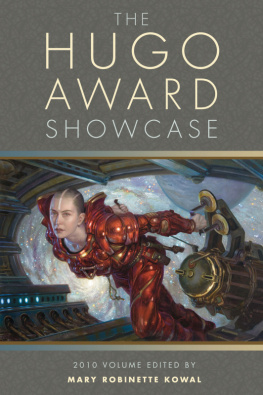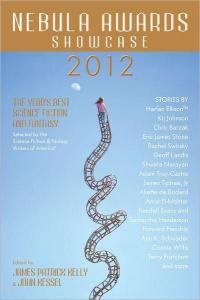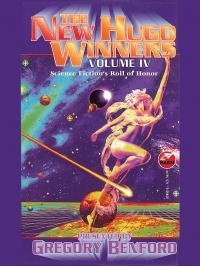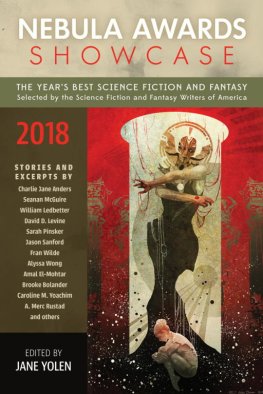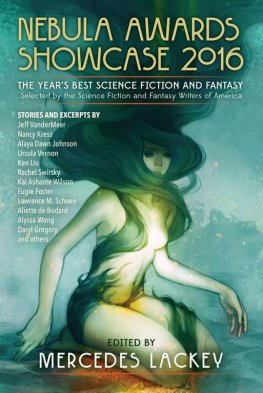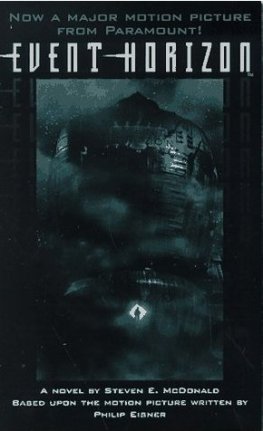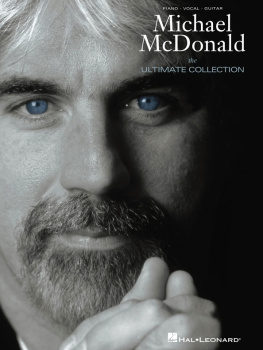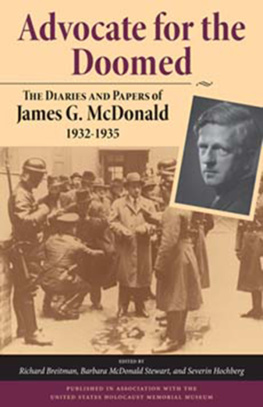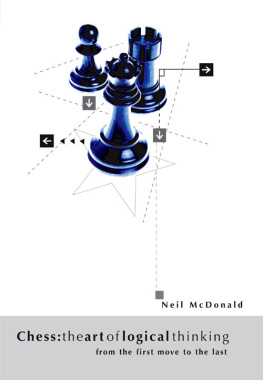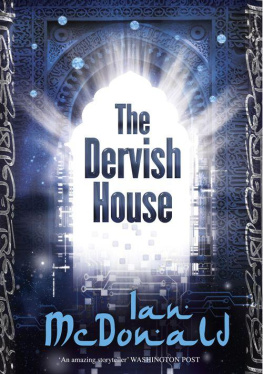McDonald Ian - The Hugo Awards Showcase: 2010 Volume
Here you can read online McDonald Ian - The Hugo Awards Showcase: 2010 Volume full text of the book (entire story) in english for free. Download pdf and epub, get meaning, cover and reviews about this ebook. City: Rockville;Md, year: 2010, publisher: Prime Books, genre: Detective and thriller. Description of the work, (preface) as well as reviews are available. Best literature library LitArk.com created for fans of good reading and offers a wide selection of genres:
Romance novel
Science fiction
Adventure
Detective
Science
History
Home and family
Prose
Art
Politics
Computer
Non-fiction
Religion
Business
Children
Humor
Choose a favorite category and find really read worthwhile books. Enjoy immersion in the world of imagination, feel the emotions of the characters or learn something new for yourself, make an fascinating discovery.
- Book:The Hugo Awards Showcase: 2010 Volume
- Author:
- Publisher:Prime Books
- Genre:
- Year:2010
- City:Rockville;Md
- Rating:5 / 5
- Favourites:Add to favourites
- Your mark:
- 100
- 1
- 2
- 3
- 4
- 5
The Hugo Awards Showcase: 2010 Volume: summary, description and annotation
We offer to read an annotation, description, summary or preface (depends on what the author of the book "The Hugo Awards Showcase: 2010 Volume" wrote himself). If you haven't found the necessary information about the book — write in the comments, we will try to find it.
The Hugo Awards Showcase: 2010 Volume — read online for free the complete book (whole text) full work
Below is the text of the book, divided by pages. System saving the place of the last page read, allows you to conveniently read the book "The Hugo Awards Showcase: 2010 Volume" online for free, without having to search again every time where you left off. Put a bookmark, and you can go to the page where you finished reading at any time.
Font size:
Interval:
Bookmark:
THE HUGO AWARD SHOWCASE

2010 volume
edited by MARY ROBINETTE KOWAL


Copyright 2010 by Prime Books.
Cover art 2010 by Donato Giancola.
Cover design by Stephen H. Segal.
Ebook design by Neil Clarke.
All stories are copyrighted to their respective authors, and used here with their permission.
World Science Fiction Society, WSFS, World Science Fiction Convention, Worldcon, NASFiC, Hugo Award, the distinctive design of the Hugo Award Trophy, and the Hugo Award Logo are service marks of the World Science Fiction Society (www.wsfs.org), an unincorporated literary society, and are used under license.
ISBN: 978-1-60701-245-0 (ebook)
ISBN: 978-1-60701-225-2 (Trade Paperback)
Prime Books
www.prime-books.com
No portion of this book may be reproduced by any means, mechanical, electronic, or otherwise, without first obtaining the permission of the copyright holder.
For more information, contact Prime Books:
prime@prime-books.com

, Mary Robinette Kowal
, John Kessel
, Kij Johnson
, Nancy Kress
, Michael Swanwick
, Elizabeth Bear
, Robert Reed
, James Alan Gardner
, Mary Robinette Kowal
, Ian McDonald

All of us come to science fiction and fantasy from different roads, but it is hard to spend any time in the genre without becoming aware of the Hugo Awards. For many readers, the Hugo Awards are one of the ways of deciding what to read in a given year. Looking at the ever widening array of science fiction and fantasy on the bookstore shelves its easy to become overwhelmed and the stamp of Hugo Award winner on the cover offers a reassurance that a large number of fans, of people like you, thought that book was outstanding.
Thats because the Hugo Awards are voted on by the membership of the World Science Fiction Society, an international collection of science fiction and fantasy readers. The awards have been given out annually since 1955 although the history of the award stretches back to 1939. Originally the members of the World Science Fiction Society voted on the bests of the year, without presenting any awards. In 1953, in Philadelphia, the committee decided to act on the brainchild of Hal Lynch and present actual awards. These slender rockets were handmachined by Jack McKnight. That year the awards went to: Alfred Bester, Novel, The Demolished Man ; Astounding and Galaxy, Professional Magazine; Virgil Finlay, Interior Illustrator; Hannes Bok and Ed Emshwiller, Cover Artist; Philip Jos Farmer, New Author or Artist; Willy Ley, Excellence in Fact Articles; and Forrest J. Ackerman, #1 Fan Personality.
Whats interesting to me about those early awards is that short fiction was overlooked. Today, it is easy to walk into a bookstore and buy the 2009 Hugo winning novel, The Graveyard Book by Neil Gaiman. The short fiction on the other hand tends to slip through the cracks and get lost as magazines go off the rack. Its true that many of the stories gets picked up in Years Best anthologies or appears in other forms elsewhere but it is still easy to miss. How can you tell which anthology has a Hugo winner in it?
This collection is intended to bring together the winners and some of the nominees to show you what the World Science Fiction Society thought were the most remarkable short stories, novelettes and novellas last year. Now, the Hugos were originally called the Annual Science Fiction Achievement Awards which is, to my mind, a beautifully accurate way to describe them, because even if you dont like a story or a novel its still possible to recognize that it stood out from the crowd and achieved something special. Sometimes that achievement is in the use of language, or the thought experiments, or the sheer moving power of a story. The wonderful thing about the works in this volume is that they are wildly different from one another.
Looking at the short fiction categories, particularly when you pull the nominees into the mix, demonstrates the wide range of possibilities within science fiction and fantasy.
So what exactly are novellas? It means short novel, but the definition that the Hugos use is that it is a work of fiction between 17,500 and 40,000 words. It was first awarded in 1968 to Philip Jos Farmers Riders of the Purple Wage and Weyr Search by Anne McCaffrey. Maybe youve heard of these authors? Weyr Search, interestingly enough, was the first part of her extremely popular novel Dragonflight and was in Analog.
One reason people pay attention to the short fiction categories, in fact, is that they often spotlight authors who might have interesting novels in them.
Novelettes have a tricky role. Running between 7,500 and 17,500 words they fill the space between short stories and novellas. Some people feel that the categories are arbitrary distinctions and so the novelette category periodically gets dropped from the ballots. It was first awarded in 1955 to Walter M. Miller Jrs The Darfstellar. The award was dropped for the year 1957 then again from 1959-1966. It ran for three years and was again dropped until 1973 from whence it has remained on the ballot. It is a different form than either a short story or a novella but the lines between where one begins and the other ends are fairly fluid. A novelette gives an author the breathing room to explore a complicated idea without trying to fit into a small wordcount, while at the same time retaining a tighter focus than novellas or novels typically have.
Short stories have been around since 1955, with the exception of 1957, and was first awarded to Eric Frank Russells Allamagoosa. You see what I mean about short fiction often getting lost into the mists of time?
The fiction that youll be reading in this volume runs the gamut from seasoned professionals to first time nominees. The shortest story is 970 words the longest is 28,500. The stories span the time between 1813 and so far in the future that Earth is a myth like Eden. In structure and voice they are wildly different.
The strength of this volume, I think, is in how different these stories are from one another. That diversity is one of the strengths of the fields of science fiction and fantasy.
I hope you enjoy exploring the short fiction worlds of the Hugo Awards.
Mary Robinette Kowal
June 2010
Pride and Prometheus
It takes a certain level of audacity to decide to take two of the great literary establishments and create a mashup. I mean, lets not pretend that taking Pride and Prejudice and bringing Mary Shelleys Frankenstein into the mix is anything other than that.
Except, of course, Kessel takes it way past that point. In less experienced hands, this would be fan fic at best. What we have instead is something that stays true to the social manners books of Austens day while introducing the gothic horror of Mary Shelley and then creates something totally new. It is an intimate study of a girl, Mary, doomed to be a supporting cast member not just in Austens story but in her life outside the story. She is an observer and gives us a picture of Dr. Frankenstein from the outside.
Since Mary Shelleys original story is told in first person, we are never able to see Frankenstein without the lens of himself in the way. Kessel shows us an awkward man, during part of his journey where he is most damaged emotionally. It is fascinating and feels oddly voyeuristic.
Next pageFont size:
Interval:
Bookmark:
Similar books «The Hugo Awards Showcase: 2010 Volume»
Look at similar books to The Hugo Awards Showcase: 2010 Volume. We have selected literature similar in name and meaning in the hope of providing readers with more options to find new, interesting, not yet read works.
Discussion, reviews of the book The Hugo Awards Showcase: 2010 Volume and just readers' own opinions. Leave your comments, write what you think about the work, its meaning or the main characters. Specify what exactly you liked and what you didn't like, and why you think so.

